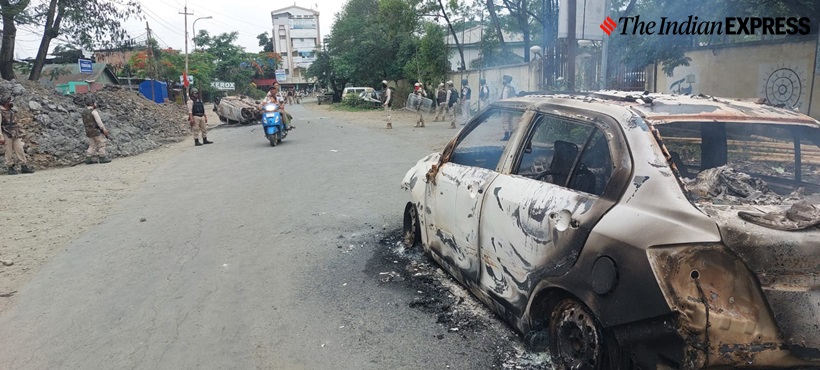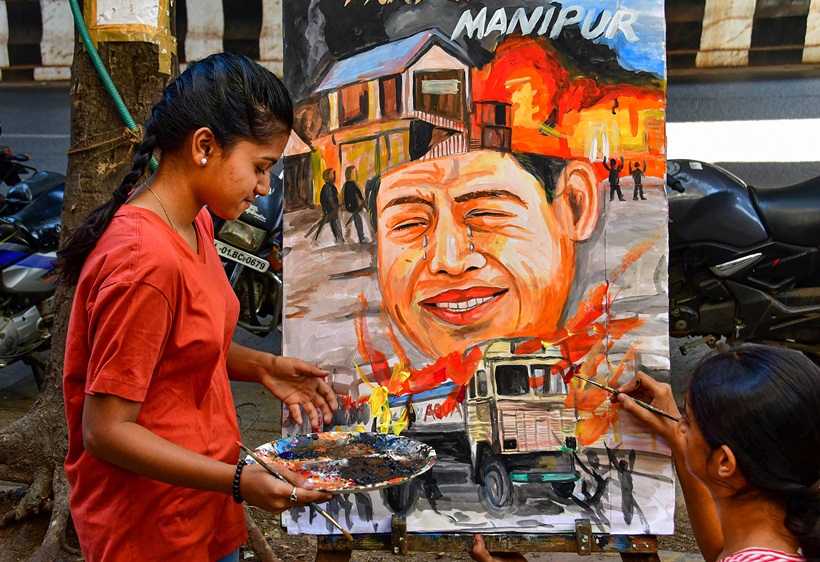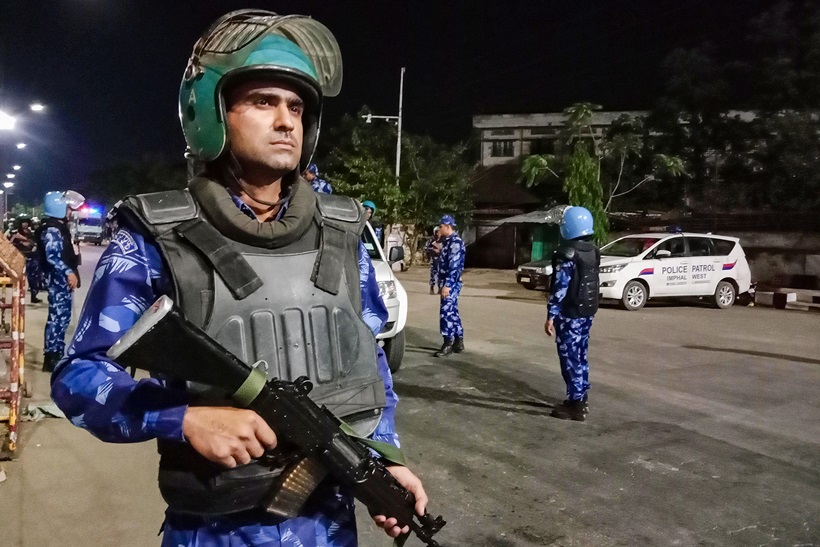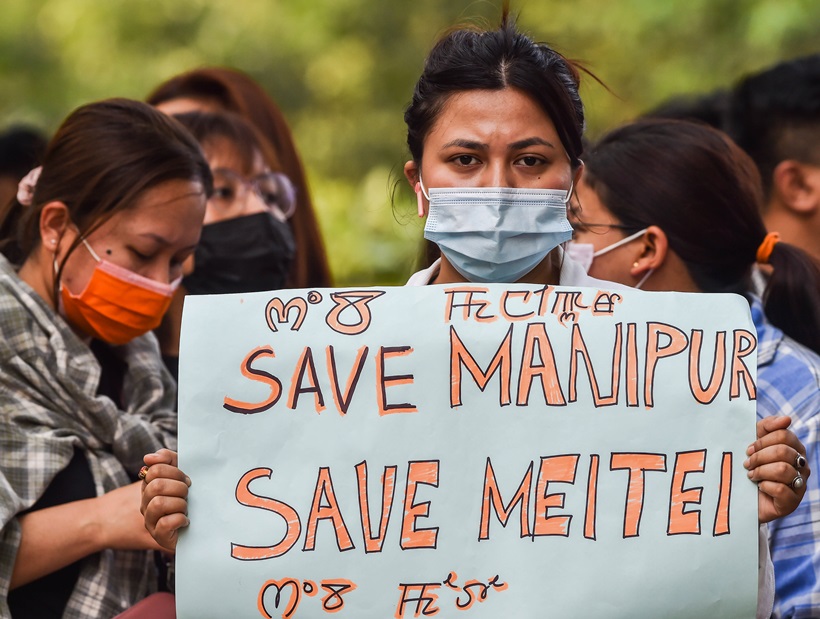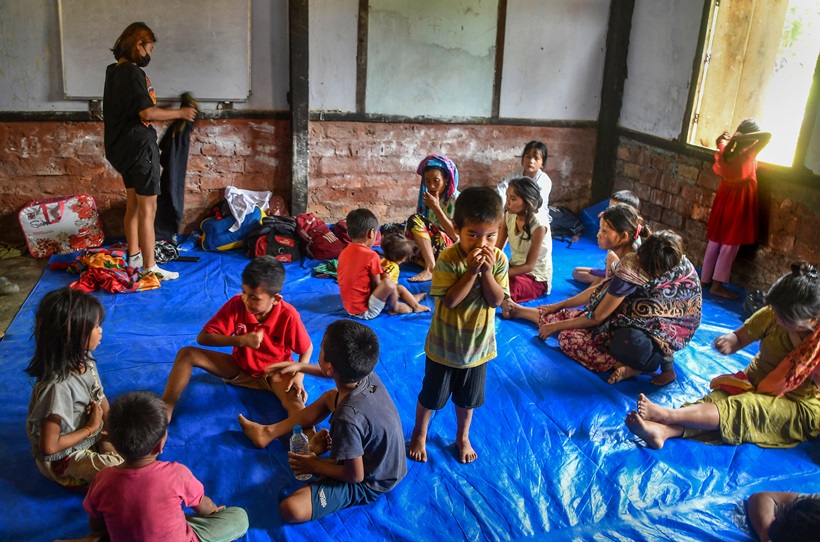The Manipur challenge: Fault lines in police, state awash with weapons
These episodes underline the challenge the security forces are facing in Manipur. Sources within the state security establishment say in almost every incident of arson or firing, there is resistance to intervention by security personnel.
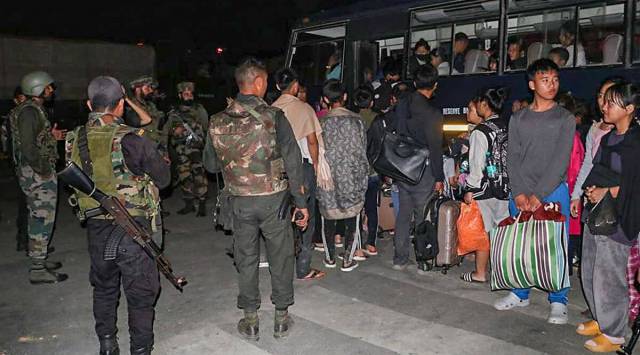 Indian Army and Assam Rifles personnel rescue civilians from violence-hit areas, in Manipur. (Photo: PTI/File)
Indian Army and Assam Rifles personnel rescue civilians from violence-hit areas, in Manipur. (Photo: PTI/File) In a state awash with arms and roiled by ethnic clashes for more than a month now, the latest round of killings in the area of Khamenlok, near Kuki-dominated Kangpokpi’s borders with the Meitei stronghold of Imphal East, is a stark reminder of the challenges security forces face in their attempts to restore normalcy.
The killings late Tuesday was the second incident of violence in Khamenlok in 36 hours. On Monday afternoon, when a gunfight broke out between Meitei and Kuki groups in the Khamenlok area, security forces were rushed to the area. But they could not reach in time because women and children had blocked the road. By the time the route was cleared, nine persons from the two communities had sustained gunshot injuries.
Days earlier, in Sugnu which is east of Churachandpur, a contingent of Assam Rifles found the road dug up. When AR personnel went to the local police station to complain, there was a verbal altercation. The policemen accused the paramilitary personnel of interfering in their work. The heated exchange, sources said, even had the two sides cocking their guns before they backed down.
These episodes underline the challenge the security forces are facing in Manipur. Sources within the state security establishment say in almost every incident of arson or firing, there is resistance to intervention by security personnel.
“We can’t lathicharge women and children. Clearing the crowd takes time. And by that time, the damage is done. It appears people do not want the state to intervene,” a senior officer said.
An Army officer, on being asked about the impact of a Unified Command for coordination of all forces, said, “It’s far more complicated than you think.”
To add to the problem, sources said, the Manipur Police itself is grappling with ethnic divisions within. “Meitei policemen and Kuki policemen are sympathetic to the cause of their community. This has also resulted in delayed relay of information whenever there is conflict,” a Central security establishment officer said.
OVER a month after violence began in Manipur, the Centre’s efforts to restore normalcy are yet to make headway. Both Meitei and Kuki groups have said they will stay away from the peace panel.
Central forces are largely relying on technical intelligence. There have been episodes where security forces have left their vehicles at a blockade and walked the rest of the route. “This is simpler than getting a road cleared,” an officer said.
Public trust in security forces has eroded so sharply that every Central force vehicle is stopped by people on the road and checked. “We are supposed to be checking civilian vehicles, not the other way around. Crowds of 50-100 gather on the roads and ask for our ID cards… They even ask if one of our soldiers belongs to a specific community,” a Central force officer said.
The Peace Committee initiative has already been a non-starter with both Kuki and Meitei civil society groups pulling out. To add to the security problem on the ground, efforts to recover guns looted from police stations have not shown great results.
Of the 4,000 looted weapons, only around 1,000 have been retrieved. Although Union Home Minister Amit Shah, on his visit to the state last month, had announced that a combing operation would be conducted and those found with guns would be dealt with sternly, police and the security forces point to a different problem.
“Use of too much force at the moment will push the guns underground. Casualties from police and security force bullets can worsen the situation. So we are engaging politicians and civil society groups to persuade people to surrender weapons,” a senior officer said.
Security sources said though there are elaborate measures to ensure that the Suspension of Operations (SoO) agreement guns are not taken out of camps — the guns are under a lock that can only be opened with two keys, one of which is with the SoO groups and another with the state administration – the structure in which they are kept has a tin roof.
Moreover, those engaging in gun battles have begun to use radio sets, helping them communicate faster on the movement of security forces.
Leishangthem Susindro Meitei, BJP MLA from Khurai constituency in Imphal, has even placed a drop-box outside his house with a board that carries pictures of four assault rifles with the line ‘Please drop your snatched weapons here, feel free to do so’.
Sources close to the MLA said the drop-box was placed a week ago and has netted 130 weapons. “A large number of weapons had been looted from an armoury in our constituency. So it was for us to make efforts to retrieve them. Also, people don’t want to go to police stations or security force camps to surrender weapons. They fear they will be identified and punished. We thought this would be a good idea,” a staff member in the MLA’s office said.
But there was a flipside. As news of the drop-box spread, some young men showed up at the MLA’s residence and demanded that the weapons be handed over to them, sources said.
“With great difficulty and cajoling by the MLA, the crowd was pacified and asked to leave. Since then, the key to the box has been given to the police who clear the box every morning,” sources said.
Also, a large number of weapons are being surrendered without ammunition. “These are young men who looted sophisticated weapons with one or two magazines. After exhausting them, they are unable to procure bullets. So they find it better to surrender than to get into trouble,” sources said.
Amid allegations of Kuki insurgent groups being involved in the violence, security forces conducted a survey of Kuki insurgent groups that had signed the SoO agreement with the government. The survey found the gun numbers intact. The attendance of cadres too was found to be around 60-70% which, security establishment sources said, was better than May 3 when the clashes erupted.
“We do not know where these guns are coming from. There are allegations that these have been smuggled from Myanmar. But there is no credible intelligence input to that effect,” a senior officer in the Central security establishment said.



